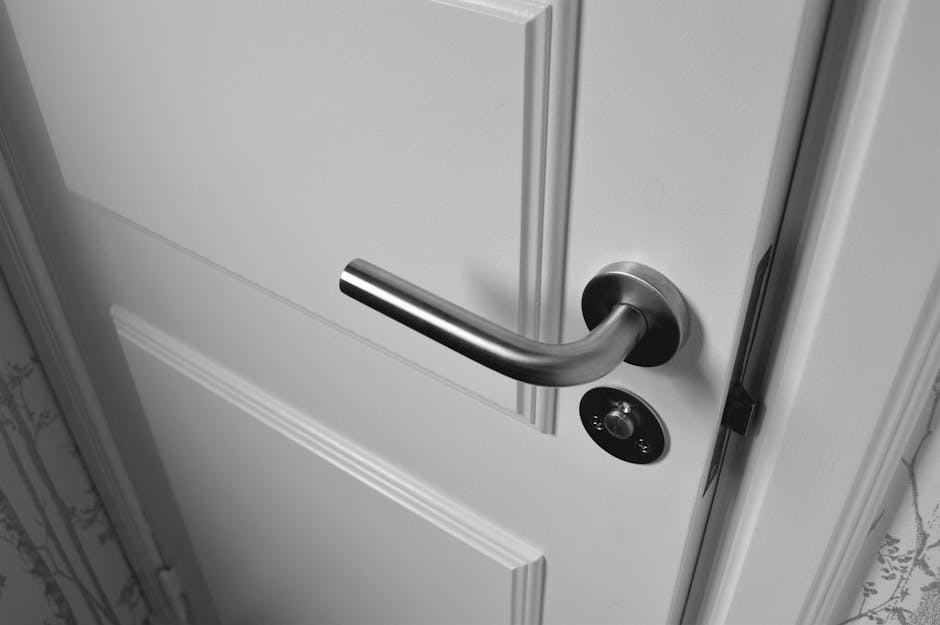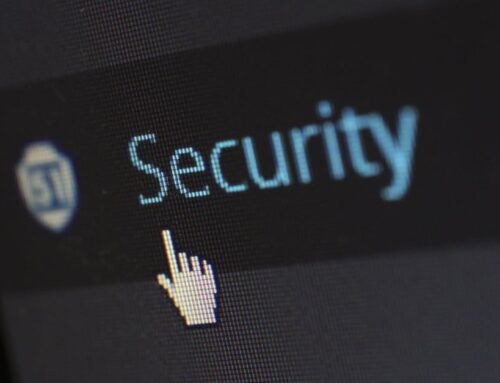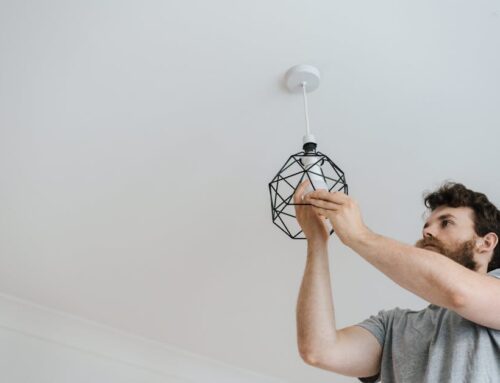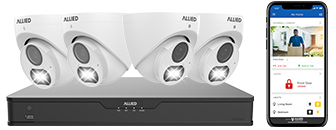History of Home Security Cameras
The concept of home security cameras has a relatively recent origin in the history of home security measures. The first recorded use of closed-circuit television (CCTV) dates back to 1942, when German engineers created a system to observe the launch of V-2 rockets. Despite its military usage, the technology laid the groundwork for modern home surveillance systems.
By the 1970s, CCTV systems began to be utilized more frequently in both businesses and homes for security purposes. These early systems were analog and used videotapes for recording. The primary users during this period were affluent individuals and business owners who could afford the high cost of installation and maintenance.
During the 1980s, technological advancements started to democratize home security. Improvements in video recording, coupled with decreasing costs, made home security cameras more accessible to the general public. Analog systems improved in quality but were still limited by storage capacity and the need for physical tapes.
The 1990s and early 2000s saw significant strides in digital technology. The transition from analog to digital video recording was pivotal. Digital systems offered greater storage capacity, higher image quality, and the ability to easily transfer video files. The introduction of the internet further revolutionized home security cameras, enabling remote monitoring and the integration of features like motion detection and alerts.
Recent years have seen exponential growth in the use of home security cameras. This growth is driven by technological innovations such as high-definition (HD) video, wireless connectivity, and smart home integration. Modern home security cameras can be easily installed and managed via smartphones and other smart devices, providing unprecedented convenience and peace of mind.
| Decade | Key Developments in Home Security Cameras |
|---|---|
| 1940s | Initial development of CCTV for military use |
| 1970s | Adoption of analog CCTV for business and home security |
| 1980s | Wider accessibility due to cost reductions and technology improvements |
| 1990s-2000s | Transition from analog to digital video; advent of internet-based surveillance |
| 2010s-present | HD video, wireless connectivity, smart home integration, and remote monitoring |
In summary, the history of home security cameras is a timeline of technical evolution and increasing accessibility, transforming from exclusive, high-cost systems to commonplace, sophisticated tools accessible to the average homeowner.
Technological Advancements in Home Security Systems
Home security systems have evolved significantly over the years, driven by technological advancements that have made them more efficient, accessible, and feature-rich. Modern home security cameras are equipped with a variety of sophisticated technologies that enhance security and provide essential functionalities.
High-Resolution Imaging
One of the key technological advancements is the improvement in camera resolution. Earlier home security cameras often featured low resolution, which made it difficult to identify individuals or details. In contrast, contemporary cameras offer high-definition (HD) and even 4K Ultra HD resolutions, providing clear, detailed images that enhance identification and monitoring capabilities.
Night Vision
Night vision technology has also seen substantial improvement. Modern cameras are equipped with infrared (IR) LEDs and advanced low-light sensors, enabling them to capture clear footage even in complete darkness. This capability is crucial for 24/7 surveillance, ensuring continuous monitoring regardless of lighting conditions.
Motion Detection
Motion detection technology is another critical feature of modern home security cameras. Equipped with advanced algorithms, these cameras can detect movement within their field of view and trigger alerts. Some systems even employ artificial intelligence (AI) to differentiate between humans, animals, and other objects, reducing false alarms and improving overall efficacy.
Wireless Connectivity
Wireless technology has revolutionized the installation and operation of home security systems. Wi-Fi-enabled cameras allow for easier installation without the need for extensive wiring. Additionally, these systems can seamlessly integrate with home networks, enabling remote access and control via smartphones or computers.
Cloud Storage
Cloud storage is another significant advancement. Traditionally, footage was stored on local devices such as DVRs or SD cards, which had limited storage capacity and were vulnerable to theft or damage. Cloud storage offers a more secure and scalable solution, allowing users to access and store large amounts of footage remotely.
Smart Home Integration
Integration with smart home ecosystems is increasingly common. Modern security cameras can often be linked with other smart devices such as lights, locks, and alarms. This integration allows for automated responses, such as turning on lights when motion is detected, enhancing overall security and convenience.
Two-Way Audio
Two-way audio capabilities enable communication between the camera environment and the user. This feature is particularly useful for confirming the identity of visitors, deterring intruders, or communicating with family members remotely.
Facial Recognition
Facial recognition technology is one of the more advanced features available in some high-end security systems. Using AI algorithms, these cameras can recognize and remember faces, providing personalized alerts and improving security by distinguishing between known individuals and potential intruders.
Overall, technological advancements have significantly enhanced the functionality and performance of home security cameras, making them a valuable tool for ensuring the safety and security of residential properties.
Crime Deterrence and Prevention
One of the primary benefits of installing home security cameras is their effectiveness in crime deterrence and prevention. The presence of security cameras can significantly reduce the likelihood of criminal activity in and around residential areas.
Visible Deterrence
Studies have shown that the mere sight of cameras can discourage potential intruders. According to a study conducted by the University of North Carolina, about 60% of burglars stated that the presence of security systems influenced their decision to target another home. Cameras serve as a visual deterrent, signaling that the property is being monitored, thereby reducing the risk of theft and vandalism.
Evidence Collection
In the event that a crime does occur, security cameras provide vital evidence that can assist law enforcement agencies. Recorded footage can help identify perpetrators, understand the sequence of events, and provide concrete evidence to support legal proceedings. This can be crucial in solving crimes and increasing the chances of prosecution. According to the Bureau of Justice Statistics, surveillance cameras have played a key role in resolving many investigations by providing critical visual documentation.
Neighborhood Security
When multiple homes within a neighborhood are equipped with security cameras, collective vigilance increases. This community-wide approach creates a network of surveillance that adds an extra layer of security. Studies have found that areas with high density of home security systems experience lower crime rates compared to those without such measures. For instance, a study by Rutgers University revealed that residential burglar alarm systems help not only the individual homeowner but also the community as a whole in reducing crime rates.
Behavior Modification
Security cameras can also influence the behavior of non-criminal elements. For instance, delivery personnel, maintenance workers, and even residents may adhere more strictly to ethical behavior when knowing they are being videotaped. This can lead to enhanced overall safety and improved property management.
Remote Monitoring Capabilities
One of the primary advantages of installing home security cameras is the ability for remote monitoring. This feature enables homeowners to keep an eye on their property from virtually anywhere in the world using a smartphone, tablet, or computer. The integration of cameras with internet-connected devices provides significant flexibility and peace of mind.
Modern security systems often come equipped with mobile apps that offer real-time video feeds. These apps also allow users to receive instant notifications and alerts if any suspicious activity is detected. This immediate access to information enables homeowners to respond swiftly to potential threats.
According to data from a survey conducted by the National Council for Home Safety and Security, over 60% of users reported that the ability to remotely monitor their homes was a key factor in their decision to install security cameras. This capability is particularly beneficial for individuals who travel frequently or have secondary homes.
The technology also facilitates two-way communication, enabling homeowners to interact with visitors or delivery personnel remotely. This not only adds a layer of convenience but can also deter criminal activities by signaling an active presence in the home. Below is a table summarizing key benefits associated with remote monitoring capabilities:
| Benefit | Description |
|---|---|
| Real-time Monitoring | Access live video feeds from anywhere using mobile devices. |
| Instant Notifications | Immediate alerts for detected motion or suspicious activity. |
| Two-way Communication | Interact with visitors or deter potential intruders in real-time. |
Additionally, remote monitoring capabilities have proven to be useful during emergency situations. For instance, if a fire alarm is triggered, homeowners can quickly verify the situation through live video footage and take appropriate action. This rapid response can significantly reduce potential damage and improve safety outcomes.
Financially, the availability of remote monitoring features can also enhance the value proposition of home security systems. Many insurance companies offer discounts on homeowner’s insurance premiums for properties equipped with advanced security systems that include remote monitoring, as these features demonstrate a proactive approach to risk management.
In summary, remote monitoring capabilities provided by home security cameras offer substantial advantages in terms of security, convenience, and financial benefits. The ability to oversee one’s property in real time, receive instant notifications, and interact with individuals on the premises are critical components that contribute to the overall effectiveness of modern home security systems.
Emergency Response and Incident Management
Home security cameras play a critical role in emergency response and incident management. One of the primary benefits is their ability to provide law enforcement and emergency services with immediate access to real-time video footage. This real-time information can significantly enhance the response time and effectiveness of law enforcement agencies, particularly when dealing with break-ins, thefts, or other security breaches.
Additionally, security cameras are integral for incident documentation. In the event of a crime or emergency, the footage captured can serve as crucial evidence in investigations and legal proceedings. This evidence can aid in identifying perpetrators, establishing timelines, and corroborating witness statements.
Moreover, modern home security systems are often integrated with smart technology features that can automatically alert homeowners and emergency services when an incident is detected. For example, advanced motion detection sensors can trigger alerts for unusual movement patterns. Some systems also include AI-based analytics capable of distinguishing between false alarms and genuine threats.
Another significant advantage is that security cameras enable remote communication during emergencies. Many systems come equipped with two-way audio capabilities, allowing homeowners to communicate directly with emergency responders or provide instructions to family members during a crisis, even if they are not physically present.
Furthermore, home security cameras also contribute to post-incident review and analysis. By reviewing the recorded footage, homeowners and security professionals can analyze the events leading up to the incident, identify vulnerabilities in the security setup, and implement measures to prevent future occurrences.
In summary, the integration of home security cameras into emergency response and incident management processes offers substantial benefits, including real-time information sharing, incident documentation, automated alerts, remote communication capabilities, and post-incident analysis. These features collectively enhance the security and safety of residential properties.
Insurance Benefits and Cost Savings
One notable benefit of installing home security cameras is the potential for insurance benefits and cost savings. Insurance companies recognize that homes equipped with security systems are at a lower risk for burglaries and other incidents. As a result, many insurers offer discounts on homeowners’ insurance premiums for properties with installed security cameras.
According to the Insurance Information Institute (III), homeowners can often receive a discount on their insurance premiums ranging from 5% to 20% if they install a comprehensive security system, which typically includes security cameras, alarms, and monitoring services. The exact savings depend on the insurer and the level of security provided by the system.
Here is a table illustrating potential insurance discounts from various insurers:
| Insurer | Potential Discount |
|---|---|
| Allstate | Up to 15% |
| State Farm | Up to 15% |
| Liberty Mutual | Up to 10% |
| GEICO | Up to 20% |
In addition to insurance discounts, security cameras can contribute to cost savings by preventing loss and damage due to theft, vandalism, and other criminal activities. By deterring potential intruders and providing evidence for law enforcement, homeowners can avoid the financial impact of replacing stolen items or repairing damages.
Furthermore, security cameras can play a crucial role in early detection and incident management. In the case of a fire or a break-in, the footage can help authorities respond more efficiently, potentially minimizing property damage and further reducing costs associated with such incidents.
In summary, installing home security cameras can lead to substantial cost savings through lower insurance premiums and the prevention of financial losses. By providing a safer environment and proving to be an effective tool for incident management, security cameras offer a financially advantageous solution for homeowners.
Privacy Concerns and Legal Considerations
The integration of home security cameras into residential areas has sparked a discussion around privacy concerns and legal considerations. Understanding these aspects is crucial for homeowners to balance security and privacy.
Privacy Concerns
As home security cameras become more common, concerns about privacy infringement have increased. These concerns typically revolve around the potential for constant surveillance and the misuse of recorded footage. For example, cameras positioned incorrectly can capture video of neighbors and public spaces, leading to privacy violations.
Another critical issue is data security. Unauthorized access to security camera feeds, often through hacking, can compromise personal privacy. The proliferation of internet-connected devices, or IoT (Internet of Things), has made it important for users to implement robust security measures to protect their data.
- Position cameras to avoid invading neighbors’ privacy.
- Use strong, unique passwords for camera systems.
- Regularly update the firmware of security devices.
Legal Considerations
Legal considerations are another significant aspect to consider when installing home security cameras. Laws and regulations governing the use of surveillance equipment vary across jurisdictions. Homeowners must comply with both local and federal laws to avoid potential legal issues.
In many regions, it is illegal to record audio without consent. This law applies to home security systems that include an audio recording feature. Additionally, there are specific guidelines regarding the use of cameras in shared spaces, such as apartment complexes or housing communities.
| Region | Key Legal Requirement |
|---|---|
| United States | Consent required for audio recording; no expectation of privacy in public spaces. |
| European Union | Strict data protection laws under GDPR; consent needed for recording. |
| Canada | PIPEDA regulations on video surveillance; clear signage recommended. |
It is advisable for homeowners to research the specific laws in their area and, if necessary, consult with a legal professional to ensure full compliance. Understanding both privacy concerns and legal obligations is critical for responsibly utilizing home security cameras.
Future Trends in Home Security Technologies
The landscape of home security technologies continues to evolve, driven by advancements in various fields. Emerging trends in home security cameras are geared towards enhancing safety, convenience, and integration with other smart home devices.
1. Artificial Intelligence and Machine Learning
Artificial Intelligence (AI) and Machine Learning (ML) are fast becoming integral components of modern home security systems. These technologies enable cameras to learn and adapt to their environments, resulting in more accurate and efficient threat detection. AI can distinguish between common movements, like pets wandering around, and potential security breaches, reducing the rate of false alarms.
2. Integration with Smart Home Ecosystems
Future home security cameras are expected to feature increased integration with smart home ecosystems. This means seamless connectivity with other devices such as smart locks, lighting systems, and voice assistants. Integrated systems can provide a more comprehensive approach to home security, allowing users to control and monitor all aspects of their home security through a single platform.
3. Enhanced Image and Video Quality
There is a growing trend towards improved image and video resolution. Innovations like 4K cameras and advanced night vision capabilities are becoming more common, offering clearer and more detailed footage. High Dynamic Range (HDR) is also being incorporated to handle varied lighting conditions effectively.
4. Edge Computing
Edge computing involves processing data closer to the source of data generation, which in this case is the security camera. By doing so, home security cameras can analyze footage in real-time without needing to send it to a central server. This results in faster response times and reduced bandwidth usage.
5. Increased Use of Cloud Services
The adoption of cloud-based storage and services is likely to proliferate. Cloud solutions offer scalable storage options and remote access to security footage. These services can also facilitate software updates and maintenance without the need for physical intervention.
6. Biometric Authentication
Future home security systems may incorporate biometric authentication methods, such as facial recognition. Such systems can identify registered individuals and integrate with access control mechanisms to automate entry and exit without compromising security.
Projected Trends Overview
The following table outlines the projected future trends in home security technologies:
| Trend | Description |
|---|---|
| Artificial Intelligence and Machine Learning | Improved threat detection and reduced false alarms through environmental learning. |
| Integration with Smart Home Ecosystems | Seamless connectivity with other household devices for comprehensive security. |
| Enhanced Image and Video Quality | Higher resolution and advanced features like HDR for clearer footage. |
| Edge Computing | Local data processing for real-time analysis and reduced bandwidth usage. |
| Increased Use of Cloud Services | Scalable storage and remote access to footage, alongside easy updates. |
| Biometric Authentication | Facial recognition and other biometrics for enhanced identification and access control. |













